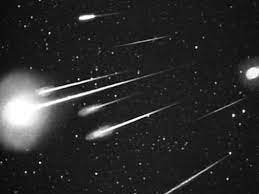Leonid Meteor Shower:

Many skywatchers in India and around the globe are poised for a cosmic treat—the Leonid Meteor Shower, which has already been underway since November 6, is set to reach its peak in the pre-dawn hours of November 17–18, 2023.
- Leonid meteor shower is brought about by the dust and debris abandoned by the comet Tempel-Tuttle.
- It is commonly peaking in mid-November.
- The shower is called after the Leo constellation, from which the meteors appear to radiate.
- This Tempel-Tuttle comet circles the sun at regular intervals of 33 years.
- When the comet passes near the sun, it warms up and delivers a tonne of material, shaping a dense cloud of dust and gas around it.
- This cloud follows the comet’s circle and fans out over the long run.
- Every year, the Earth crosses the orbit of Tempel-Tuttle in mid-November and, in some cases, experiences the comet’s dust cloud.
- When this occurs, the dust particles enter the earth’s atmosphere at high speed (around 70 km/s) and catch fire, creating bright streaks of light in the sky.
- These are what we see as the meteors, the Leonid meteor shower.
- The Leonids are noted for sometimes causing meteor storms, as described by a higher influx of meteors.




